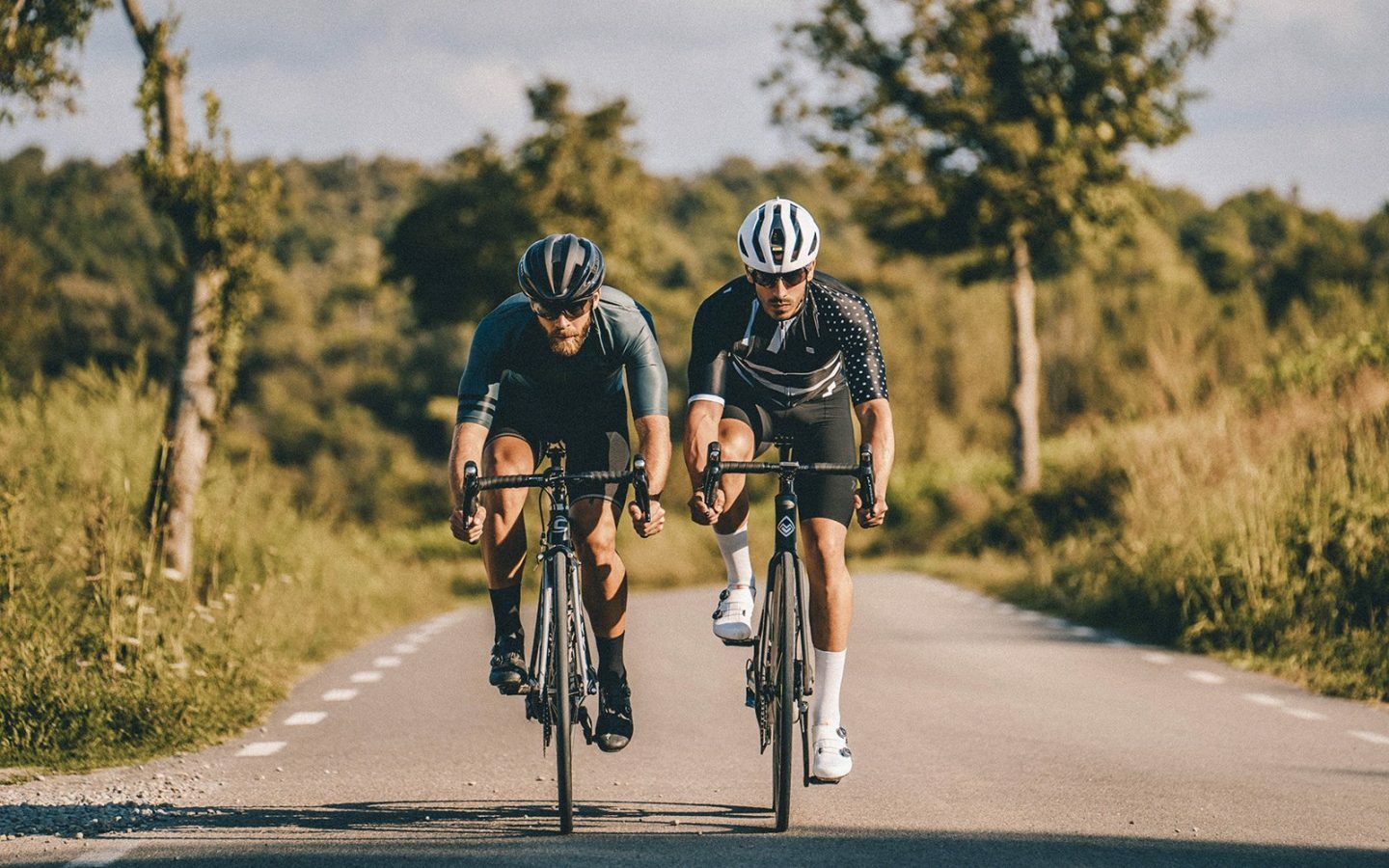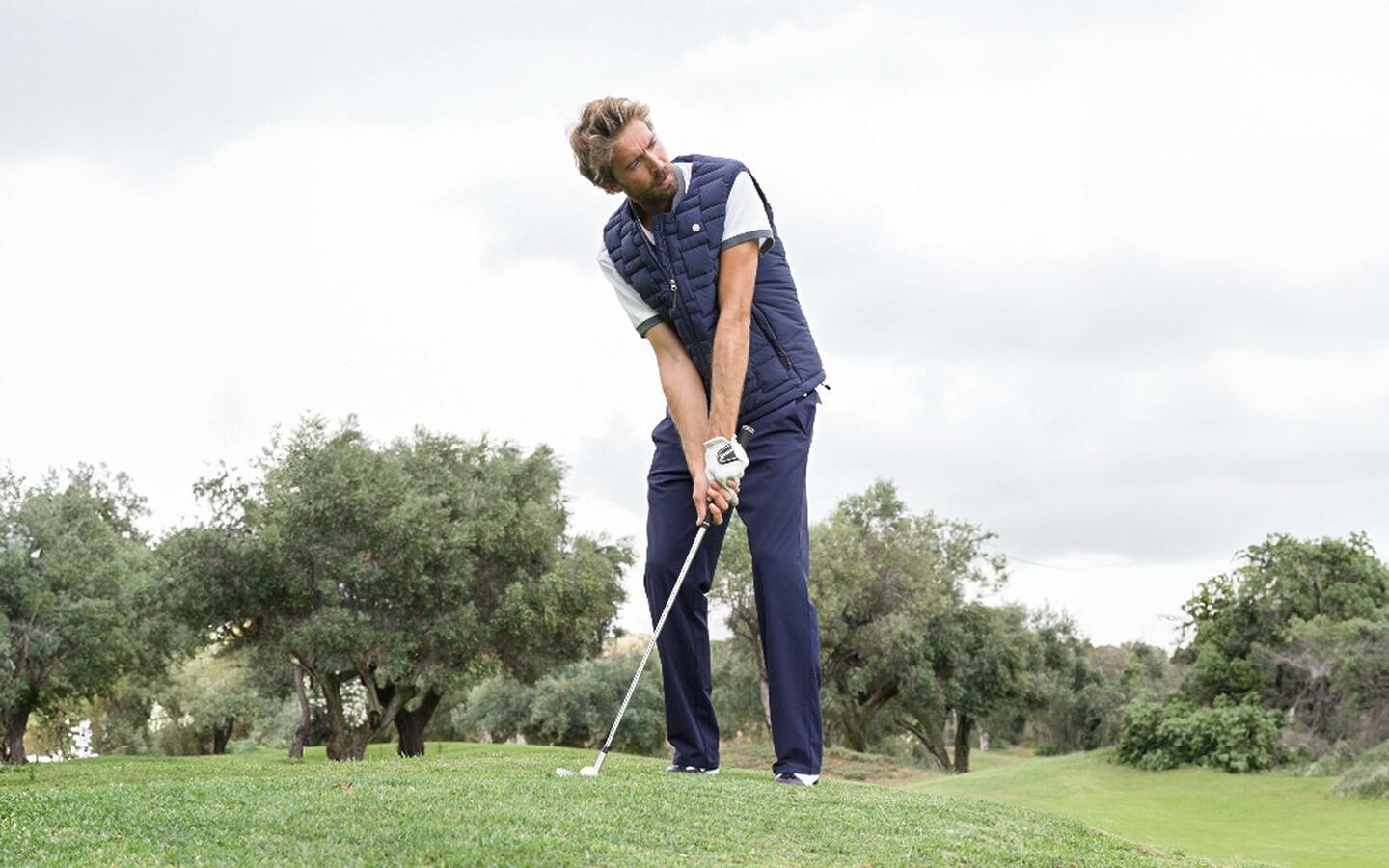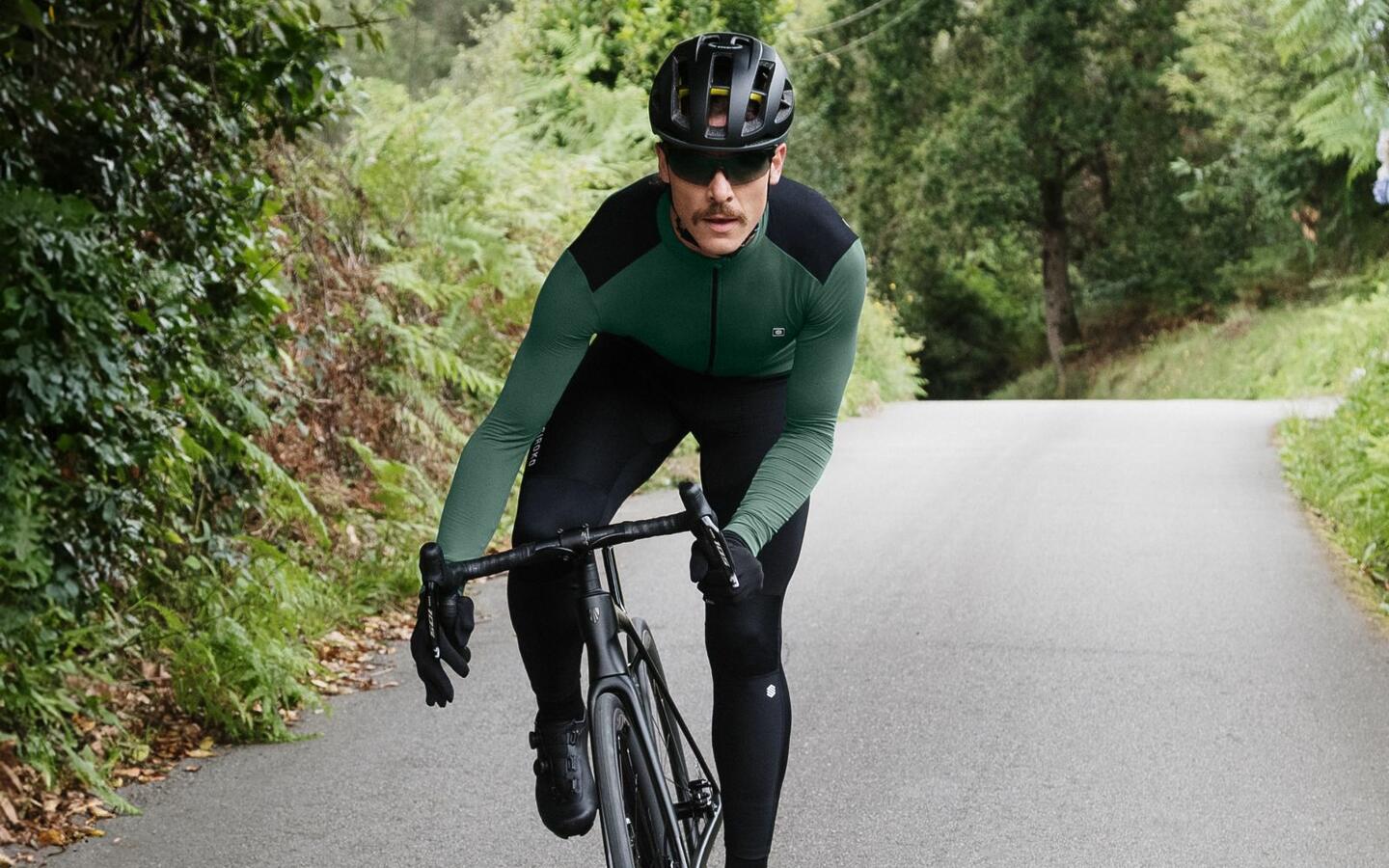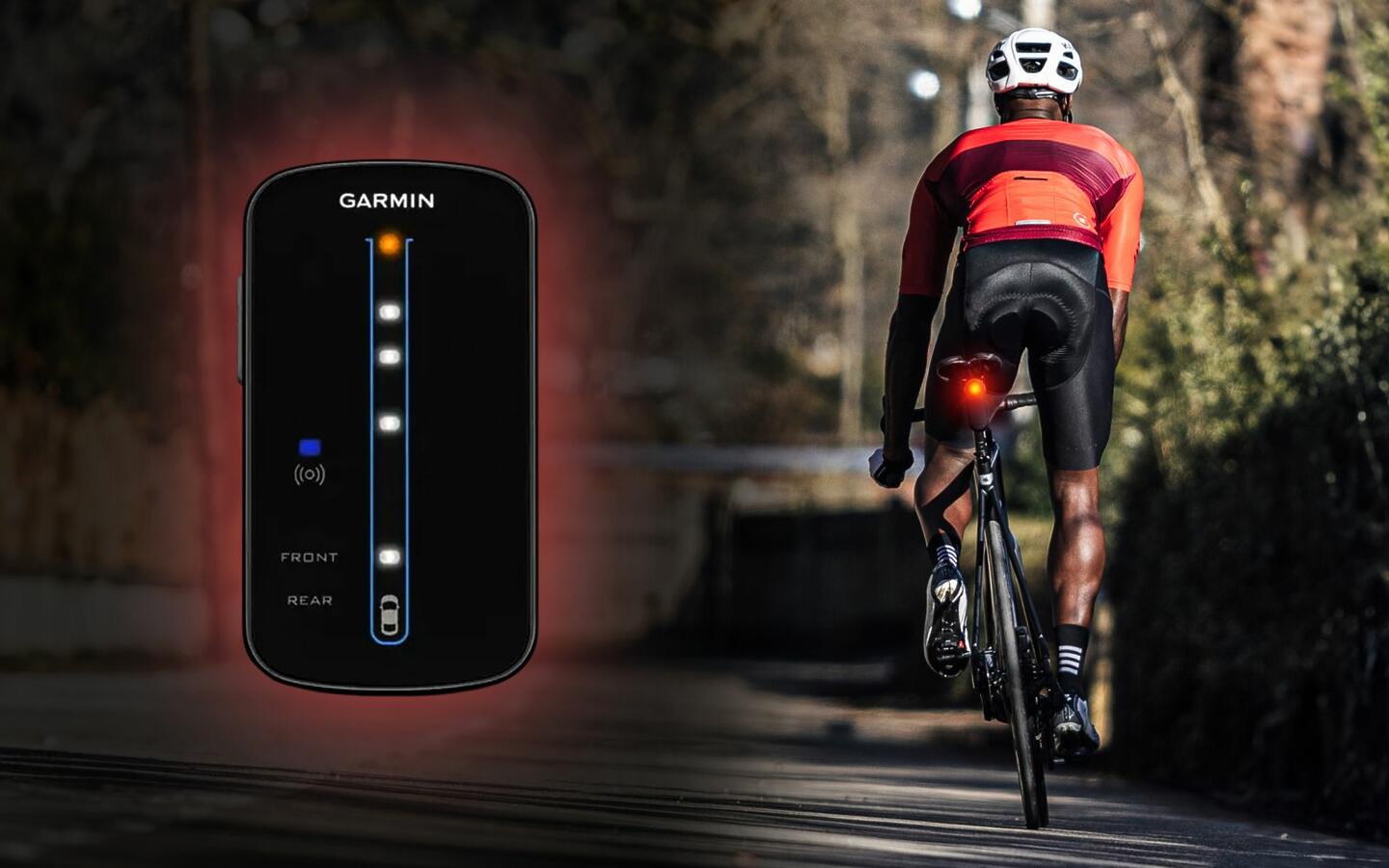The name of one of Siroko’s cycling windproof vests – the Crosswind – will be our excuse to talk about one of the most characteristic formations in cycling: the echelon. A spectacular and beautiful tactical move when watched from the sofa, but a real torture for cyclists, especially for those who do not enter the rotation of the lead riders, end up being exposed to all the wind and eventually dropped off when the echelon breaks up. But let’s not get ahead of ourselves and see which way the wind blows first.
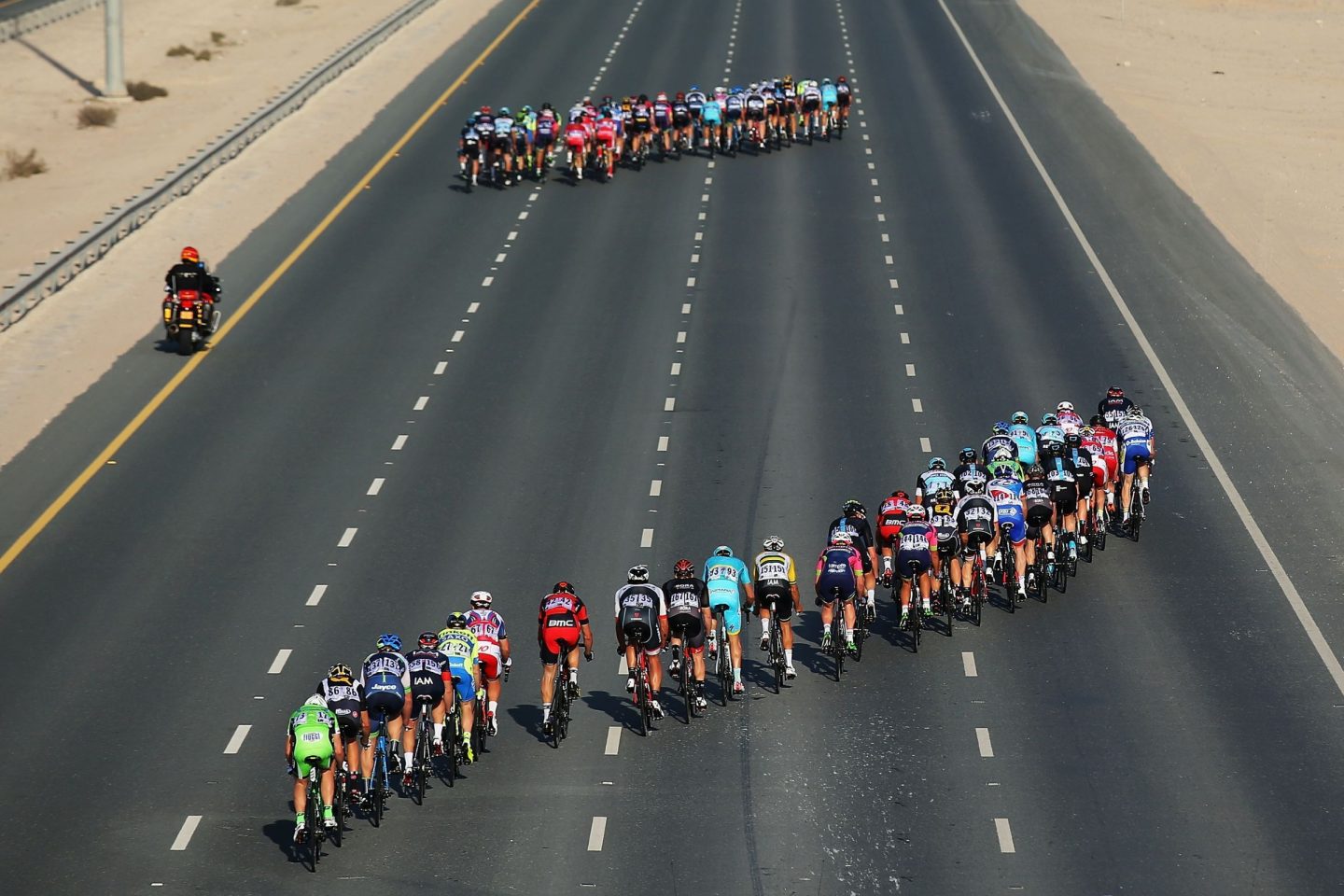
In the image above you can see two echelons and the wind blowing from the right. That’s why the cyclists are fanned out across the road from right to left, trying to protect themselves from the wind. In the same picture we can also find all three key conditions to form an echelon: a straight and long road, a strong crosswind and, above all, a team or several racers who want to break away from the peloton.
In the photo above they have already managed to break up the echelon so the first group is forming an attack echelon and the second group is in a defense echelon formation. The former want to create even more distance from the latter, while the latter are trying to plug the gap. In both groups (we can see it better in the second one) there are a number of riders entering the rotation to ride at the head of a group – the best way to go fast and expend less effort. The racers go in two rows stretched out across the road, rotating clockwise in this case, going up on the protected side and going down on the side where the wind is coming from. If the wind were blowing from the left, the formation would be from left to right and the rotation would be counterclockwise.
The three key elements above are fundamental for the formation of an echelon, but the organization, the strength of the riders or the team to form the echelon, and of course the right position and timing of the break-up are also very important. The reason for this is that the break-up occurs when a team or a group of riders narrow the protected area and force other riders to get fully exposed to the wind without being able to enter the rotation.
How is the protected area narrowed? In the first image we can see that the road is very wide, there is plenty of room for all the racers to protect themselves from the wind. The cyclists at the head of each group are positioned well to the right, hugging the roadside, giving the rest of the riders protection from the wind. But if in the first image the front riders move to the left, they reduce the protected area.
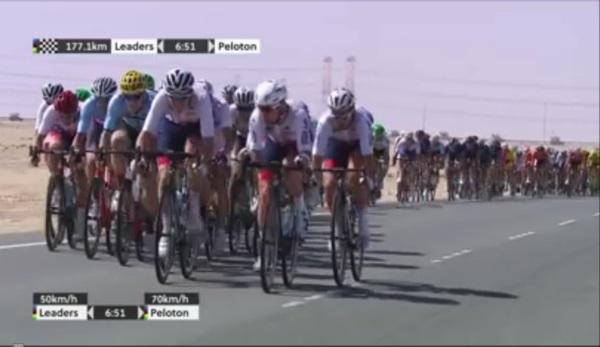
This shot is from the cycling Road World Championships held in Doha in 2016, a race where the breakaway occurred 177 kilometers before the finish line. It was possible due to the tactical move of the British team that, as you can see in the photo, placed 4 riders in the lead, leaving less than half of the road for the rest of the riders to get protected from the wind. This meant that there was not enough space for everyone and many were exposed to the wind, which in this case was blowing from the left. In the photo you can see how the peloton is starting to break up. If you want to know how the story ended or have a look at this championship full of wind, sand and camels (because there was not much of an audience, really), here it is.
Explaining the echelons using just words can be quite complicated, but hey, that’s what photos and videos are for.
This video by Eurosport explains it perfectly using as an example the flawless strategy and coordination of the Lotto Soudal team in the third stage of the 2016 Cycling Tour of Turkey. The Belgian team of 4 cyclists first formed the whole echelon and then reduced the protected area so that only the team riders entered in rotation (you can tell they are used to the wind), leaving the rest exposed to the wind. This way they created the perfect conditions for their sprinter, a German cyclist Andre Greipel, for what may have been the easiest sprint of his entire career. I imagine that the “Gorilla” thanked his teammates more than ever for their work that day.
The most exciting and challenging thing about the echelons is that the racers and sporting directors know when they can occur and that, if a side wind is blowing and there is a straight road, this is the time for a group of racers or a team to light the fuse and start the show. But even with this in mind and warning the racers to stay alert, well positioned and grouped, anything can happen as the road has its own rules and there is a limit to the strength of the riders. Many favorites in grand tours have been dropped-off, losing their chances of overall victory; others have turned the ranking upside down and the echelons were the make-or-break of the races in many cycling classics.
If you are a racing cyclist, it is very likely that you will have to deal with a crosswind at some point. It is not easy to ride in an echelon as it requires everything we have just told you: position, organization, concentration and strength. You can’t lose focus even for a second because if you drop the wheel and get dropped off, you’re done. No matter how strong you are, you won’t get very far on your own. It’s better to join the second group, form an echelon, start rotating and try to plug the gap. The relays must be short and smooth, keeping the speed as high and constant as possible. Do not rotate too hard because that way you’re forcing the rider you have just relieved to work harder to get onto your wheel and protect himself from the wind. On the other hand, it is better to do rotation at the head than to stay at the tail. Entering the rotation will give you moments of “rest” and moments in the lead. On the other hand, at the tail of the group you may be more “comfortable” but you are on the edge, perhaps skimming the edge of the road, and any false move or mistake and you drop the wheel and get dropped off.
If you’re not a racing cyclist, you will most likely avoid the torture of echelons, but one day you might have to deal with the wind and it could be the cyclist’s greatest enemy. Riding alone and facing a strong headwind can be a nightmare, while strong crosswinds might become pretty dangerous. No matter where the wind comes from, a cycling vest like the Crosswind model, or any of the other windproof cycling vests from Siroko, will become your best ally in times of strong winds.
